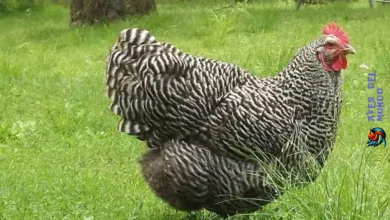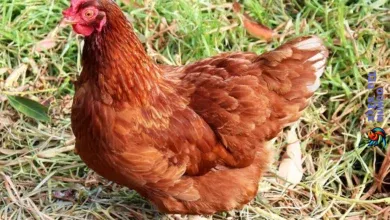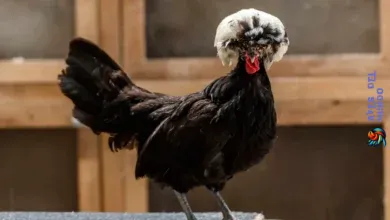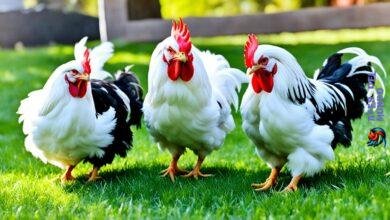The Asil chicken, also known as the Aseel, is a unique and ancient breed originating from the Indian subcontinent. Renowned for its resilience, fighting ability, and striking appearance, the Asil chicken holds a special place in the hearts of poultry enthusiasts and breeders worldwide.
This comprehensive guide aims to provide in-depth knowledge about Asil chickens, including their history, characteristics, care requirements, and more.
History of the Asil Chicken
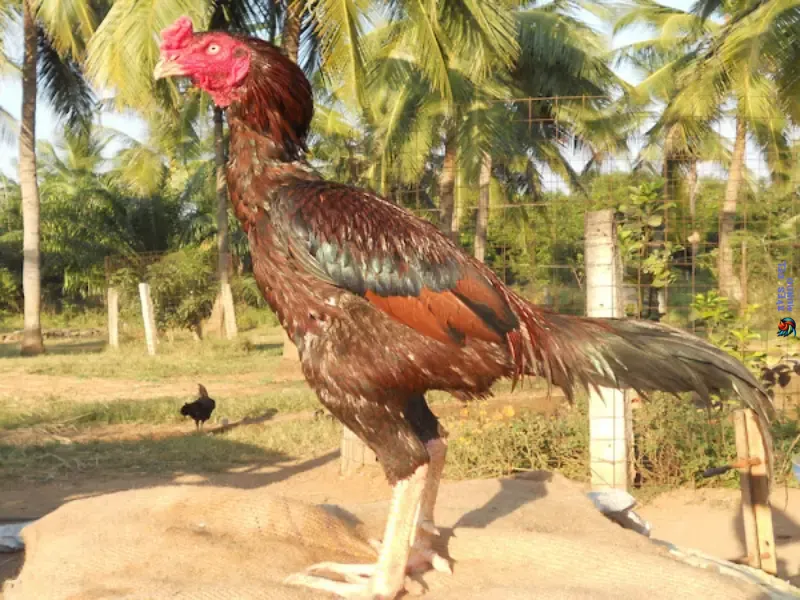
The Asil chicken has a rich history dating back over 2,000 years. It is believed to have originated in India, where it was initially bred for cockfighting due to its aggressive nature and physical prowess. The breed’s name, Asil, translates to «pure» or «noble» in Arabic, reflecting its esteemed status among ancient breeders.
Historical Significance
- Ancient Warriors: Asil chickens were revered in ancient India for their fighting skills. They were often kept by royalty and nobility as symbols of power and prestige.
- Cultural Heritage: The Asil chicken has played a significant role in various cultural practices and traditions across India and neighboring countries. Its importance extends beyond mere entertainment, influencing art, literature, and folklore.
Global Spread
With the advent of trade and exploration, the Asil chicken found its way to other parts of the world, including the Middle East, Southeast Asia, and Europe. In each region, the breed adapted to local conditions, leading to the development of various Asil subtypes.
Characteristics of Asil Chickens
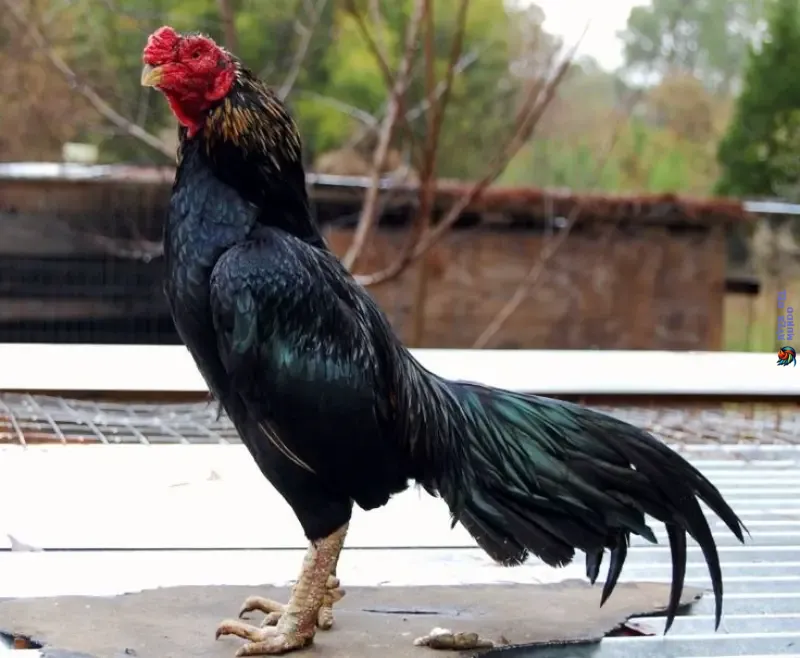
Asil chickens are known for their distinctive physical and behavioral traits. Understanding these characteristics is essential for breeders and hobbyists who wish to raise this unique breed.
Physical Appearance
- Body Structure: Asil chickens have a muscular and robust build, with a broad chest and strong legs. They are compact and well-balanced, making them formidable fighters.
- Feathers: Their feathers are hard and glossy, providing excellent protection in fights. The feather coloration can vary, with common colors including red, black, white, and blue.
- Head: The head of an Asil chicken is relatively small compared to its body. They have a pea comb, which is less prone to injury during fights.
- Eyes: Asil chickens have large, expressive eyes that convey their alert and aggressive nature.
Behavioral Traits
- Aggressiveness: Asil chickens are known for their fierce temperament. They are highly territorial and will often engage in combat to defend their space.
- Intelligence: Despite their aggressive nature, Asil chickens are intelligent and can recognize their handlers. They are quick learners and can be trained for specific tasks.
- Loyalty: Asil chickens are loyal to their handlers and can form strong bonds with them. This loyalty makes them suitable for hobbyists who invest time in building a relationship with their birds.
Types of Asil Chickens
There are several subtypes of Asil chickens, each with unique characteristics and adaptations. Some of the most well-known types include:
Kulang Asil
- Origin: India
- Characteristics: Kulang Asils are known for their size and strength. They have a robust build and are often used in cockfighting.
- Appearance: They typically have a red or black coloration with a glossy sheen.
Madras Asil
- Origin: India
- Characteristics: Madras Asils are slightly smaller than Kulang Asils but are equally aggressive. They are known for their agility and speed.
- Appearance: They come in various colors, including red, black, and white.
Reza Asil
- Origin: India and Pakistan
- Characteristics: Reza Asils are one of the smallest Asil subtypes. They are highly prized for their fighting ability and endurance.
- Appearance: They often have a dark coloration with a hard feather texture.
Breeding and Raising Asil Chickens
Breeding and raising Asil chickens require specific knowledge and dedication. Here are some essential guidelines to help you get started.
Breeding Guidelines
- Selection of Breeders: Choose healthy and well-built birds for breeding. Look for physical traits such as a broad chest, strong legs, and hard feathers.
- Breeding Season: The breeding season for Asil chickens typically starts in spring. Ensure that your breeding pairs are in optimal health before the season begins.
- Mating: Asil chickens are known for their aggressiveness, even towards potential mates. Monitor the mating process closely to prevent injuries.
Incubation and Hatching
- Incubation Period: The incubation period for Asil chicken eggs is around 21 days. Maintain a temperature of 99.5°F and a humidity level of 55-60% during this period.
- Hatching: Ensure that the hatching environment is clean and safe. Newly hatched chicks should be kept in a warm and dry brooder with access to food and water.
Raising Chicks
- Brooding: Keep the chicks in a brooder with a temperature of 95°F for the first week. Gradually reduce the temperature by 5°F each week until it reaches room temperature.
- Feeding: Provide a high-quality chick starter feed to ensure proper growth and development. Ensure that the chicks have constant access to fresh water.
- Health Monitoring: Regularly check the chicks for signs of illness or distress. Vaccinate them against common poultry diseases as recommended by a veterinarian.
Housing and Care
Proper housing and care are crucial for the health and well-being of Asil chickens. Here are some guidelines to help you provide the best environment for your birds.
Housing Requirements
- Space: Asil chickens are active and require ample space to move around. Provide at least 4 square feet of space per bird in the coop and 10 square feet in the run.
- Ventilation: Ensure that the coop is well-ventilated to prevent the buildup of moisture and ammonia. Proper ventilation also helps in temperature regulation.
- Perches and Nesting Boxes: Provide sturdy perches and nesting boxes for your birds. Asil chickens prefer elevated perches, so ensure that they are strong enough to support their weight.
Feeding and Nutrition
- Diet: Asil chickens require a balanced diet to maintain their health and vigor. Provide a high-quality poultry feed that meets their nutritional needs. Supplement their diet with fresh fruits, vegetables, and grains.
- Water: Ensure that your birds have access to clean and fresh water at all times. Change the water regularly to prevent contamination.
Health and Wellness
- Regular Check-ups: Conduct regular health check-ups to monitor for signs of illness or injury. Pay attention to their feathers, eyes, and legs for any abnormalities.
- Vaccination: Vaccinate your birds against common poultry diseases such as Marek’s disease, Newcastle disease, and infectious bronchitis.
- Parasite Control: Regularly check for parasites such as mites, lice, and worms. Use appropriate treatments to keep your birds parasite-free.
Seasonal Care Guide
Proper care of Asil chickens varies with the seasons. Here’s a handy seasonal guide to help you manage your Asil chickens throughout the year:
Seasonal Care Guide
| Season | Activity | Jan | Feb | Mar | Apr | May | Jun | Jul | Aug | Sep | Oct | Nov | Dec |
|---|---|---|---|---|---|---|---|---|---|---|---|---|---|
| Breeding | yes | yes | yes | yes | |||||||||
| Incubation | yes | yes | yes | yes | |||||||||
| Raising Chicks | yes | yes | yes | yes | yes | yes | yes | yes | |||||
| Health Check-ups | yes | yes | yes | yes | yes | yes | yes | yes | yes | yes | yes | yes | |
| Parasite Control | yes | yes | yes | yes | yes | yes | yes | yes | yes | yes | yes | yes |
Common Challenges and Solutions
Raising Asil chickens can present unique challenges. Here are some common issues and their solutions:
Aggressiveness
- Challenge: Asil chickens are naturally aggressive, which can lead to injuries and stress.
- Solution: Provide ample space and enrichment to reduce boredom and territorial behavior. Separate aggressive birds if necessary to prevent fights.
Health Issues
- Challenge: Asil chickens can be prone to certain health issues such as respiratory infections and parasites.
- Solution: Maintain a clean and well-ventilated coop, provide a balanced diet, and conduct regular health check-ups. Vaccinate your birds and use appropriate treatments for parasites.
Breeding Difficulties
- Challenge: The aggressive nature of Asil chickens can make breeding challenging.
- Solution: Monitor the mating process closely to prevent injuries. Provide a safe and controlled environment for breeding pairs.
Asil chickens are a fascinating and unique breed with a rich history and distinctive characteristics. Whether you are a seasoned breeder or a hobbyist, understanding the needs and care requirements of Asil chickens is essential for raising healthy and thriving birds. By following the guidelines provided in this comprehensive guide, you can ensure that your Asil chickens live a healthy, happy, and productive life.
FAQs
What is the origin of Asil chickens?
Asil chickens originated in India over 2,000 years ago. They were
initially bred for cockfighting and have since spread to various parts of the world.
What are the key characteristics of Asil chickens?
Asil chickens are known for their muscular build, hard feathers, and aggressive nature. They are intelligent, loyal, and have a strong territorial instinct.
How do you breed Asil chickens?
To breed Asil chickens, select healthy breeders, monitor the mating process closely, and ensure optimal conditions for incubation and hatching.
What are the common health issues in Asil chickens?
Common health issues in Asil chickens include respiratory infections and parasites. Regular health check-ups, vaccinations, and maintaining a clean environment can help prevent these issues.
How can you manage the aggressiveness of Asil chickens?
Provide ample space, enrichment, and separate aggressive birds if necessary to manage their aggressiveness. Ensure a balanced diet and regular health check-ups to maintain their well-being.
By implementing these practices and understanding the unique needs of Asil chickens, you can successfully raise and enjoy this remarkable breed.
